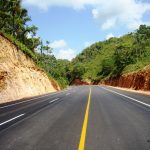Isfodosu presents new illustrated catalogs of fish and birds at FIL 2023
Santo Domingo.- The Salomé Ureña Higher Institute for Teacher Training (ISFODOSU) presented at the Santo Domingo International Book Fair 2023 its illustrated catalogs of the reef fish of the National Aquarium and the bird collection of the Manuel Valverde Podestá National Zoo.
These publications are the result of the work carried out by the participants of the Master’s program in Biology for Research, given by ISFODOSU in conjunction with ISA University.
These masters, for their final work in Zoology, carried out a research project with the aim that the results would not remain on paper, but that the effort itself would be a contribution to the institutions dedicated to the conservation of animal species.

Guided by the ISFODOSU Biology Coordinator, Dr. Miguel Guevara, and together with the technical teams of the Aquarium and the Zoo, they carried out the research that became catalogs that are made available to the visitors of both institutions, with special emphasis on school children.
During the presentation activity, ISFODOSU’s Vice-Rector for Research and Post-Graduate Studies, Andrea Paz, highlighted the high quality of the publications, both for the value of their content and for the edition carried out by the Publications Department of the academic entity, an area managed by Miguelina Crespo, with proofreading by Adrian R. Morales and Vilma Martínez, and design and layout by Julissa Ivor Medina and Yelitza Massiel Sosa.

Guevara, together with masters Irene Brito and Mayeline Jaime, referred to their experiences during the realization of the research project, and valued the impact of these works for the environmental sector and for the teaching of zoology in our schools and universities.
At the end of the presentations, a symbolic delivery of the catalogs was made to representatives of the National Zoo and the National Aquarium.
The event, held at the Dominican Authors Pavilion of the Latin American Hall, located in the National Library, was also attended by teacher Pavel Corniel, on behalf of the ISA University rector, Dr. Edwin Reyes. Also in attendance were ISFODOSU teachers and students, and representatives of the Aquarium and the Zoo.
An essential catalog
As a coastal nation, the fishery is part of the Dominican economy, so some of the fish that reach our waters are destined for food and others for aquarium exhibits. According to the records of the National Aquarium of the Dominican Republic, several reef fish, such as the long-spined squirrelfish (Mytripristis jacobus), can be observed in the waters of Las Aguilas Bay and Pedernales; others, such as the navajon or doctor fish (Acanthurus coeruleus), are frequently found in Cayo Arena, Punta Rucia and Montecristi. The only ones of this marine water community that do not usually visit the coasts of the Caribbean Sea and the Atlantic Ocean are the reef fish of the Pacific, which is why they are exhibited in fish tanks and aquariums.
This catalog, which ISFODOSU makes available, was prepared for didactic purposes, with clear, summarized and updated information so that it can reach the public in a simple and accessible way. The National Aquarium has a great variety of reef fish that reach our coasts and are available for exhibition. All the specimens selected in these pages were observed and studied in that institution in 2021.
The main objective is to make known the importance of this type of aquatic ecosystem for the survival of thousands of marine species that are part of the health, food, local economy and tourism. Through the description of these animals, it is understood that without these coral structures many species may disappear and, consequently, economic, food, environmental and other factors may also cease to exist.
The Dominican Reef Network explains that in our country, apart from the climate change that affects these ecosystems, massive and destructive fishing, high water pollution -including the incorrect handling of waste (garbage)- and the lack of knowledge of the population about the importance of preserving the environment have influenced their deterioration.
Importance of the birds
The birds reviewed in this catalog are ordered and identified according to the list provided by the ZooDom portal, published and available with updates at https://www.zoodom.gob.do. It contains cards found on that website and integrates a list with some additional species to those available online, although with a more comprehensive content in this research. The data sheets used in this catalog include the following data for each species:
Taxonomy
Photograph: allows you to see the common characteristics of the bird. Common name: name by which a species may be known. Scientific name: indicates genus and species. Kingdom: fragments or divides living things by their common nature. Phylum: taxonomic category that groups living beings according to their system of organization. Class: homologous living beings that are part of a phylum. Order: common characteristics and/or qualities that make up a class. Family: closely related organisms with similar attributes. Each family is part of an order and is divided into different genera. Genus: species related to each other through evolution. Species: a group of organisms or populations with the same characteristics capable of interbreeding and producing fertile offspring.
Generalities
Description: color of plumage, eyes, beak and legs. Diet: diet of birds. Reproduction: biological stage. Habitat: place with certain conditions for a species to live, factors that influence its evolution and development. Locomotion: the way in which it moves from one place to another. The following categories were also implicitly considered: conservation, status, dimensions, defense, protection, geographic distribution, among others.
Birds, among the most valued animals
Birds are among the best known and most valued animals in the natural world, with a wide variety of species. Each species has unique characteristics in terms of physiology, habits and habitat. Some have huge populations, others have small numbers, and still others are endangered.
There are different reasons to appreciate birds; they are valued for cultural pride, economic and artistic factors, while a percentage of people value them for philosophical reasons. Many significant and cultural symbols have a bird as an emblem; they are highlighted in drawings, songs and poetic compositions all over the world. Certain birds stand out for their religious symbolism and their singing has been and is the inspiration for numerous musical pieces.
Birds provide us with benefits that contribute to the ecosystemic balance, by serving as pest control in crops, and in terms of trade they play an essential role. Some are specialists in pollination and through them it is possible to distribute or disperse seeds, while others are scavengers. For a large number of individuals, birds are a kind of connection to the surrounding environment.

ISFODOSU’s commitment
In its commitment to the community and the environment, ISFODOSU provides these illustrated catalogs, which describe the species exhibited at the Aquarium and Zoo, including aspects of utmost importance such as their conservation status. Beyond the didactic purposes, this resource, together with other initiatives of this educational institution, is a vindication of its philosophy and its “green goals” that we have proposed to bring to the classrooms.
ISFODOSU trains leading professionals and teachers who also encourage the promotion of love for nature in future generations and contribute to the process of building more sustainable cities and communities. Reading and consulting these materials become the prelude to cultivate respect and promote the conservation of species that are part of our unique biodiversity.

















